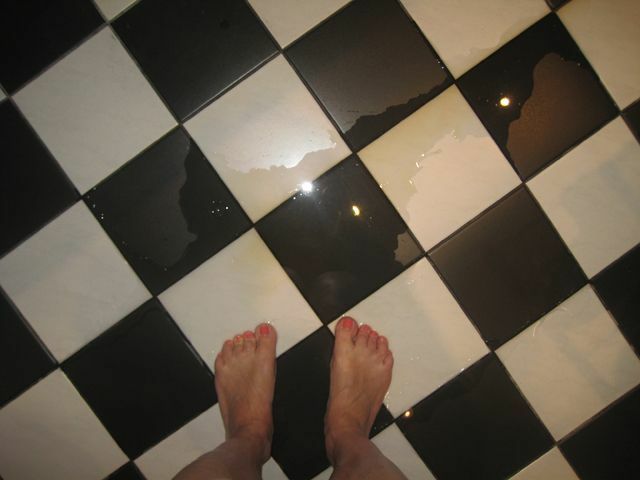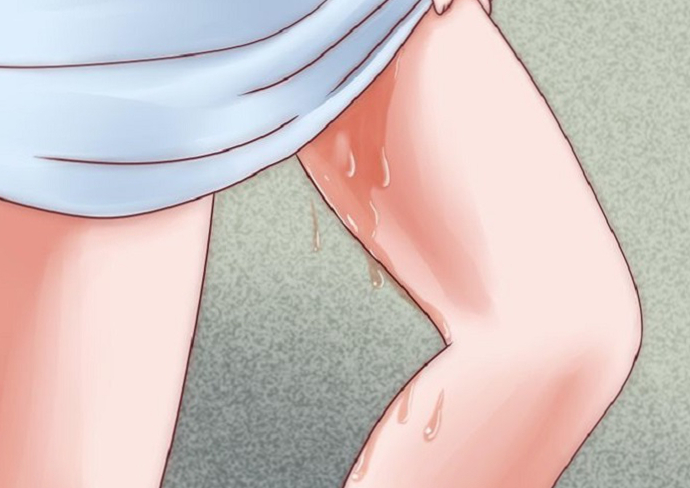Near the end of pregnancy, expectant mothers are tormented by fears and doubts: will they not miss the beginning of labor? One of the signs of the onset of labor is the outflow of amniotic fluid. In this article, we'll talk about how to understand that you have run out of water and what you need to do with it.
Contents
- How do you know if the water has passed?
- How does the water escape from pregnant women?
- What should be the amount of waste water?
- Have the waters gone - when will the fights begin?
- Why did the green waters come off?
- Why did the waters drain from the blood?
- Can water leave without contractions?
- Why did the waters leave early?
- How to help to move away from the waters?
- What to do if the water flows: tips and reviews
- VIDEO: 39 weeks of pregnancy what happens, outflow of amniotic fluid, recovery after birth
All future mothers experience before delivery, especially if they are first. First, they are afraid to skip the beginning of fights or not to distinguish real fights from training fights.
Secondly, do they experience everything collected in the maternity ward, or at night, if fights begin, they will run around the house and search for the missing things. Well, in the third, many people are worried about the question, but suddenly the water will disappear first, then what to do and how not to miss this moment.
How do you know if the water is off?
When the waters leave, this can be compared with spontaneous urination, as if someone opened a tap and it does not close. The liquid can flow out both by flow and jet.
 Shed water
Shed water - You can also hear or feel the cotton inside the abdomen before the outflow of water, this just burst the bubble
- The water can also go away at once, and leak gradually if the bubble bursts on the sideline or if it does not burstcompletely, and the liquid flows through small cracks
- In this situation, it is difficult for a pregnant woman to distinguish water from urinary incontinence or excessive discharge from the vagina. To do this, remember that the urine will have a yellow tint, and the discharge is more dense and resemble slime, while the amniotic fluid is very watery.
- . Also, a woman can at home conduct such a test: empty the bladder, wash and dry, then lie on whiteSheets and wait about an hour. If there is a wet stain on the sheet after that, the pregnant woman leaks the water
- There is another way: pharmacies sell special gaskets, which as a test will determine whether it's water or not. This method is very convenient and you can carry out the test at home.
 Test for leakage of amniotic fluid
Test for leakage of amniotic fluid How does the water escape from pregnant women?
When the baby presses against the front wall of the bladder, it bursts and the amniotic fluid that protects the whole pregnancy and feeds it flows.
Bubble gap can be either spontaneous or committed by a doctor for medical reasons, but a woman should understand the risks and necessity of this procedure.
What should be the amount of waste water?
Normally, the amount of water is in the range of 1-1.5 liters. How many of them will go away from every pregnant woman is a question that has no answer, becauseeach case is individual. The waters are divided into the front and rear, they are separated by the contact belt, which is the head of the fruit, densely covering the walls of the birth canal.
Before the birth, usually come out the front waters, 200-300 ml of liquid, and the rear waters, as a rule, come out during the birth itself.
Have the waters gone - when will the fights begin?
The pregnant woman's water can go away even before the onset of labor, and already during the birth itself, but most often the liquid pours out during the period of active fights.
 Skirmishes and water leakage
Skirmishes and water leakage - If the waters have receded and there are no fights, this is called premature diversion of waters. This development is not very favorable, but occurs quite often, in approximately 10% of cases.
- With , the early outflow of already exists, but the cervix is only 4 cm or less open.
- With , the timely outflow of is regular and intense enough, the neckof the uterus is disclosed more than 4 cm
- The belated outflow of is when the bladder bursts some time after the full disclosure of the cervix
With premature and early water migration there is a risk of infection of the fetus, and therefore,and situations considered complications. With a long anhydrous period, women are administered antibacterial drugs to protect her and the child from infections.
It is known that rupture of the bladder leads to more intense work of labor:
- contractions intensify
- cervix opens faster
Why did the green waters come off?
Normally, amniotic fluid is clear and colorless, without a sharp odor.
If the waters are green, dark or interspersed, this indicates complications.
- One of the main disorders that leads to the green color of water is fetal hypoxia. The child does not have enough oxygen, its rear opening spontaneously contracts and the first feces of the child - meconium, which has a dark green color, falls into the water.
- The cause of green water is the aging of the placenta, which is usually observed when the pregnancy is overdone. By the end of the term the placenta can no longer perform all its functions fully and therefore supplies the baby with less nutrients and oxygen
- Another cause of this color is a transferred infectious disease such as flu, ARVI, urinary tract infections, etc.
- Very rarely the child hasgenetic diseases, while the amniotic fluid can also have a green tint.
If you have green water, and there is no labor activity yet, or it is very weak, there is a high probability that the doctor onthen you need a cesarean section, becauseThe less the child will spend in dirty waters, the less dangerous for him.
In any case, if your green water is gone, tell the doctor immediately, and if you are still at home, quickly go to the hospital.
 Departure of amniotic fluid
Departure of amniotic fluid Why did the waters drain with blood?
If you run out of water with blood, immediately call for an ambulance! This may be a consequence of placental abruption, and the pregnant woman needs urgent hospitalization. The doctor will conduct an examination, assign additional examinations to determine the cause and condition of the child, and then decide on the delivery.
Can water leave without contractions?
As a rule, if the waters have passed to the fights, then no later than 3-4 hours they should begin. If this did not happen, the question of stimulation of the onset of labor with special drugs is raised.
About when it is necessary to carry out stimulation, the opinions of doctors differ. In Europe, once again try not to intervene in the process of labor and begin to stimulate only a day after the withdrawal of water, but in Russia the deadline is 12 hours, tk.afraid of infection of the child.
A woman should be trusted in this matter to the doctor and not neglect his instructions, tk.anhydrous period is very dangerous for many complications and if the administration of medications is necessary for medical reasons, it must be carried out.
Why did the waters leave early?
In the early stages of water can depart due to the following factors:
- has an inflammatory disease of the genital organs of the pregnant woman, and there was infection in the amniatic fluid
- ischemic-cervical insufficiency - incompetence of the cervix
- instrumental intervention by doctors
- bad habits of the pregnant woman and chronic diseases
- abnormalities in the development of the uterus
- multiple pregnancy
- injury
With premature rupture of the bladder, complications such as choriomyotitis may occur. Complication is very dangerous and requires immediate delivery. It can be determined by the following signs: high fever, chills, tachycardia, painful touch to the uterus, purulent discharge from the cervix.
 Premature water diversion
Premature water diversion Treatment of premature discharge of water is performed depending on the degree of damage to the bladder, the duration of pregnancy, the state of the mother and child, the degree of readiness of the cervix.
Treatment can be as strict bed rest and medical treatment under the supervision of medical personnel, and immediate delivery or an emergency cesarean section.
A very frequent consequence of premature rupture of the bladder and the passage of amniotic fluid is fetal death for various reasons.
- If a woman leaves the water for up to 22 weeks, doctors recommend interruption of pregnancy
- From 22 to 24 weeks is also a very dangerous time, the consequences are unpredictable and the forecasts are generally disappointing. Preservation of pregnancy can have sad consequences.
- . Before 34 weeks, doctors recommend expectant management, prescribe strictbed rest and constantly monitor the condition of the fetus and mother
- From 32 to 34 weeks, the evaluation of the maturity of the fetal lungs and other examinations, if all is well, decide on delivery
Indications for emergency delivery:
- fetus weighs more than 2.5kg
- gestation period is more than 37 weeks
- fetus suffers
- has signs of infection
How to help drain off the waters?
The issue of artificial water diversion should be solved only by a doctor in the hospital and no one else. The woman herself should not do anything to speed up the process of water diversion, becausethis is very dangerous for the fetus.
 Shed water
Shed water Medical personnel may decide to prematurely puncture the fetal bladder to stimulate labor, but a woman must necessarily discuss this with the doctor, find out all the risks and the need for this procedure. In most cases this manipulation is unjustified and has many different consequences for the fetus.
Puncture of the bladder has no negative consequences only if the uterus is ready for delivery and the cervix is already fully open.
What to do if the water flows: tips and reviews
Let's sum up:
- The amount of amniotic fluid in the fetal bladder is 1-1.5 liters, with the discharge of the foreground it usually leaves about a glass of liquid
- The water can go away both before the onset of contractions and beforeby genera
- Spillage of amniotic fluid can occur both by flow and gradually leak
- Normally, water is clear and colorless
- If the water is green, dark or with blood - seek medical help immediately
- If waterwent home, you need to go urgently to the hospital, tk.when the waters leave, an umbilical cord may fall out, when squeezing it, the child will simply suffocate, not yet born. In the maternity hospital the doctor will try to restore it back, if this is not possible, an emergency cesarean section is performed.
 Fetal physician examination after the passage of amniotic fluid
Fetal physician examination after the passage of amniotic fluid . Whatever the period of pregnancy, doctors recommend urgently to go to the hospital. And since the loss of water can not be predicted, do not leave the house without taking an exchange card with a pregnant woman and a passport during the last period of pregnancy, and it's better to pack the packages in advance from the maternity ward so that you do not worry about anything if it happens.
